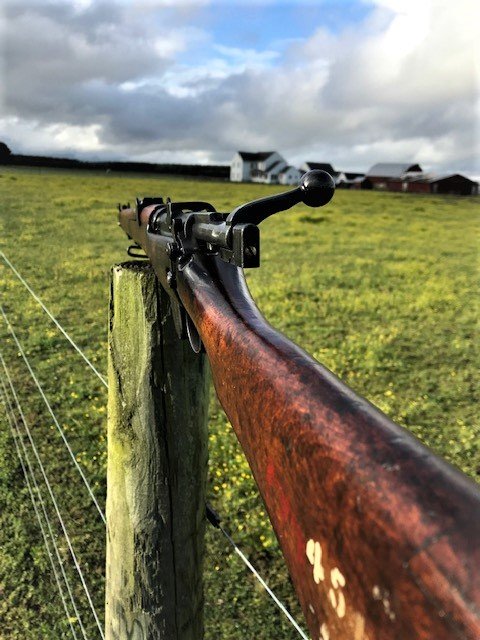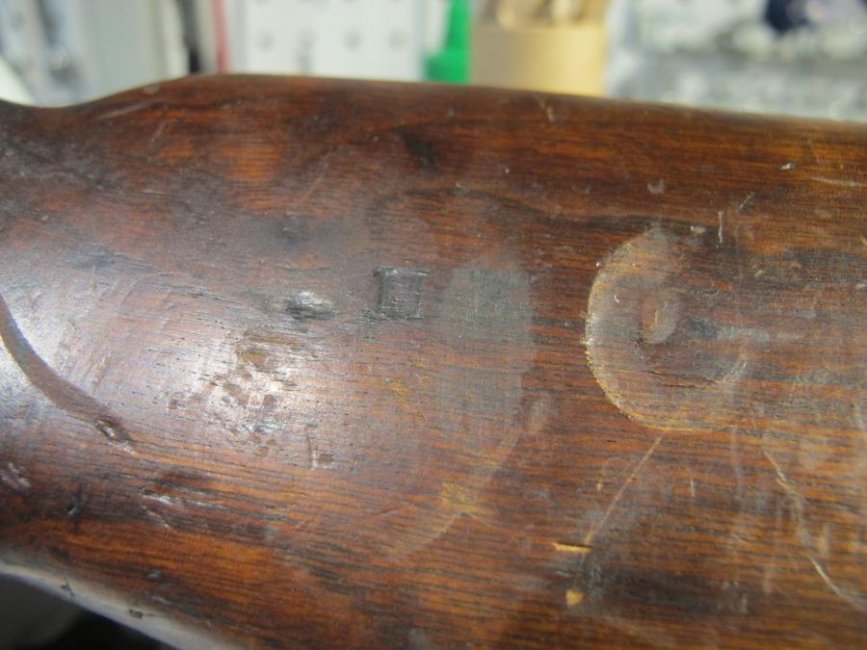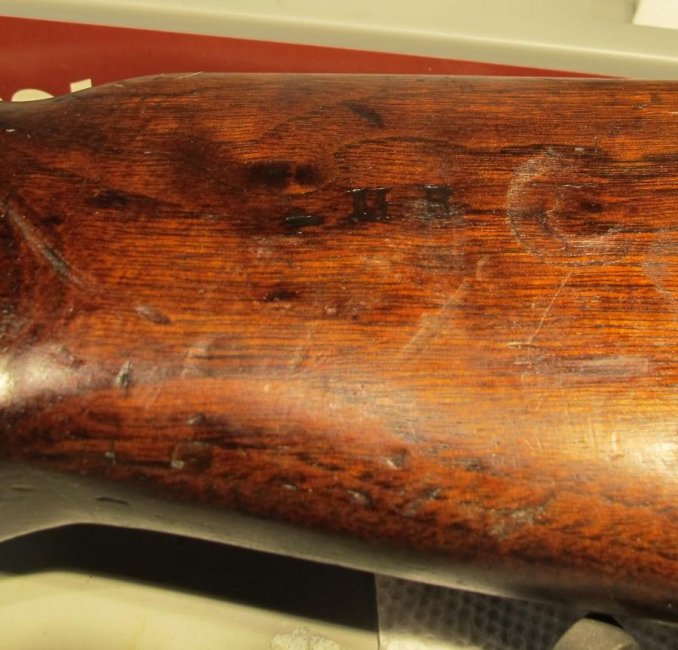Winter is coming, so I'm thinking about inside projects. One of them is to clean up some of my C&R stuff. I'm looking for a good way to clean wood that has an oil finish, not lacquered finish. Most of what I've googled uses boiled linseed oil and 0000 steel wool. Anybody have experience with this technique or have a better one?
You are using an out of date browser. It may not display this or other websites correctly.
You should upgrade or use an alternative browser.
You should upgrade or use an alternative browser.
What is a good way to clean oiled wood?
- Thread starter Arcamm
- Start date
The #1 community for Gun Owners of the Northeast
Member Benefits:
No ad networks! Discuss all aspects of firearm ownership Discuss anti-gun legislation Buy, sell, and trade in the classified section Chat with Local gun shops, ranges, trainers & other businesses Discover free outdoor shooting areas View up to date on firearm-related events Share photos & video with other members ...and so much more!
Member Benefits:
GuitarmanNick
Ultimate Member
In my experience finishing wood, one reason to use a linseed oil finish on a gun stock, is that it can be refreshed with very little effort. Remove any dirt, oil or grease from the surface using solvent(assuming cosmoline has been completely removed), then the 0000 steel wool to smooth out the surface, wipe with a clean cloth, and rub the oil into the wood. Repeat the steel wool and wiping clean between coats until the desired shine is achieved.
Other oils can produce a harder finish that offers more resistance to damage, but is more difficult to repair if damaged and is no better at protecting the wood from moisture, IMO.
On milsurps, Linseed oil is my first choice.
After seeing a few stocks in the last year that owners attempted to finish themselves before bringing to me, please do not use any brushes when applying the selected finishing material!
Use the oil sparingly, and rub it in by hand using a lint free cloth or your bare hand, only. Excess material will leave residue which makes for an uneven finish, and is not usually very pretty. Make sure to allow plenty of time for drying between coats. Depending upon the wood and finishing material being used, drying time can vary from a few hours to as much as a week. Rushing this process can leave you with a stock that remains sticky to the touch and never really feels dry.
Other oils can produce a harder finish that offers more resistance to damage, but is more difficult to repair if damaged and is no better at protecting the wood from moisture, IMO.
On milsurps, Linseed oil is my first choice.
After seeing a few stocks in the last year that owners attempted to finish themselves before bringing to me, please do not use any brushes when applying the selected finishing material!
Use the oil sparingly, and rub it in by hand using a lint free cloth or your bare hand, only. Excess material will leave residue which makes for an uneven finish, and is not usually very pretty. Make sure to allow plenty of time for drying between coats. Depending upon the wood and finishing material being used, drying time can vary from a few hours to as much as a week. Rushing this process can leave you with a stock that remains sticky to the touch and never really feels dry.
pre64hunter
Active Member
acetone
I soak it in acetone, use cotton balls to sop up the old oil. It will take it back to almost original bare wood. It doesn't hurt the wood.
Wet it, wipe it, wet it, wipe it, after awhile continue letting it soak longer. Dry it off, let it sit overnight then do it some more till you're satisfied.
Some guys recommend white gas but acetone works good, doesn't remove any wood.
WARNING, ACETONE is flammable and oil soaked rags can and WILL spontaneous combust, CATCH ON FIRE all on its own without any ignition source!
I soak it in acetone, use cotton balls to sop up the old oil. It will take it back to almost original bare wood. It doesn't hurt the wood.
Wet it, wipe it, wet it, wipe it, after awhile continue letting it soak longer. Dry it off, let it sit overnight then do it some more till you're satisfied.
Some guys recommend white gas but acetone works good, doesn't remove any wood.
WARNING, ACETONE is flammable and oil soaked rags can and WILL spontaneous combust, CATCH ON FIRE all on its own without any ignition source!
Doco Overboard
Ultimate Member
Winter is coming, so I'm thinking about inside projects. One of them is to clean up some of my C&R stuff. I'm looking for a good way to clean wood that has an oil finish, not lacquered finish. Most of what I've googled uses boiled linseed oil and 0000 steel wool. Anybody have experience with this technique or have a better one?
Natural turpentine mixed with RLo.
Use a linen rag moistened with the mixture and polish into the wood.
Do it it a couple of times over a few days letting it dry in between cleaning.
The turpentine acts as a carrier for the oil and penetrates the wood pores to lift dirt grime etc.
For really grubby grimy areas using very fine steel or bronze wool will cut through quicker but a simple linen rag or cloth is better in my opinion.
Never use alcohol or ammonia based cleaners on varnish because it will lift it and turn it to a sticky pasty mess.
Once dried out continue to feed Rlo in to the wood until you have the desired finish using less and less turps. Warmed bee's wax of furniture paste wax added in to the cleaning mixture creates a great top cot that has just the right amount of shine after final buffing with soft cloth.
Natural turpentine mixed with RLo.
Use a linen rag moistened with the mixture and polish into the wood.
Do it it a couple of times over a few days letting it dry in between cleaning.
The turpentine acts as a carrier for the oil and penetrates the wood pores to lift dirt grime etc.
For really grubby grimy areas using very fine steel or bronze wool will cut through quicker but a simple linen rag or cloth is better in my opinion.
Never use alcohol or ammonia based cleaners on varnish because it will lift it and turn it to a sticky pasty mess.
Once dried out continue to feed Rlo in to the wood until you have the desired finish using less and less turps. Warmed bee's wax of furniture paste wax added in to the cleaning mixture creates a great top cot that has just the right amount of shine after final buffing with soft cloth.
Do you have a "begging of the process" ratio for the mixture of turp/RLo?
What is RLo?
What is RLo?
Raw linseed oil.
YOLO= you only live once.
ROFO= best fried chicken.
Raw linseed oil.
YOLO= you only live once.
ROFO= best fried chicken.
TY= Thank you!
NIH = Now I'm hungry.
Doco Overboard
Ultimate Member
Do you have a "begging of the process" ratio for the mixture of turp/RLo?
I just use a very small mixing cup (cap) and literally drops of the turps.
Depending on what your working with determines how much agent/ carrier you need.
Because you should work on very small areas on fine arms, just picture a third of a shot glass with a few small drops of the carrier to work small sections of the stock.
If I have an American Pin and Billiard crudd-ed up scant stock Im not afraid of mixing up more to where I can paper towel off the grime.
If the mixture is too thin just add more oil.
Those scotch brite pads (not the green ones) work as well as steel wool too in some cases.
An old shoe polish tin makes a good means to gently warm the oil/turps and float some wax into.

I just use a very small mixing cup (cap) and literally drops of the turps.
Depending on what your working with determines how much agent/ carrier you need.
Because you should work on very small areas on fine arms, just picture a third of a shot glass with a few small drops of the carrier to work small sections of the stock.
If I have an American Pin and Billiard crudd-ed up scant stock Im not afraid of mixing up more to where I can paper towel off the grime.
If the mixture is too thin just add more oil.
Those scotch brite pads (not the green ones) work as well as steel wool too in some cases.
An old shoe polish tin makes a good means to gently warm the oil/turps and float some wax into.
View attachment 326984
Thanks for the response sir! Not to thread-jack, but I have a CMP purchased M1 that I've been procrastinanitng on cleaning up the stock for fear of efin' it all up. This may give me the push to finally get after it.
rcreynolds
Member
- Nov 4, 2015
- 65
I used heat to clean up a mauser stock. Hold the stock in front of your fireplace and note the old oil will bubble and froth to the surface. Wipe it off and repeat.
UPSguy
WWII enthusiast
Depending on how much finish you have, and the amount of dirt and oil there is embedded in wood.i have used heat and hand rubbed with alcohol and 0000 ought steel wool or cotton lint free rag. Go over last few times with just rag and alcohol if you use steel wool first.
Have cleaned many stocks using this method without taking off existing finish. Wood will be dry and hand rub tung oil on. I usually do 2 or 3 coats over a few days. (At least a day to dry in between in right conditions).
Some people use BLO or other finishing oil, it’s up to you. I have found that alot of U.S. rifles were oiled with tung oil at factory, so i’m happy with that. I have found that it dries quicker than some others too. It’s worked well on all my milsurps so far.
Have cleaned many stocks using this method without taking off existing finish. Wood will be dry and hand rub tung oil on. I usually do 2 or 3 coats over a few days. (At least a day to dry in between in right conditions).
Some people use BLO or other finishing oil, it’s up to you. I have found that alot of U.S. rifles were oiled with tung oil at factory, so i’m happy with that. I have found that it dries quicker than some others too. It’s worked well on all my milsurps so far.
I soak it in acetone, use cotton balls to sop up the old oil. It will take it back to almost original bare wood. It doesn't hurt the wood.
Wet it, wipe it, wet it, wipe it, after awhile continue letting it soak longer. Dry it off, let it sit overnight then do it some more till you're satisfied.
Some guys recommend white gas but acetone works good, doesn't remove any wood.
WARNING, ACETONE is flammable and oil soaked rags can and WILL spontaneous combust, CATCH ON FIRE all on its own without any ignition source!
I've resorted to this approach on one of two Chinese SKS stocks that I have. Mineral oil worked to get the cosmoline off but there was a residual of IDK what; impregnated cosmoline, dirt, spotty lacquer/shellac, etc. that I was not happy with. Gradually applied acetone, applied judiciously over time, did the job. Still in process and contemplating a straight BLO finish vs some red tinge. I know there are threads out there on the red tinge and I'll review them when I get there. I went through a gallon of mineral spirits with not much reduction in the schmutz
I also have a 1903 A3 that some prior owner put a layer of varnish on. Did a good job but I'm inclined to strip that off and finish with BLO but one project at a time.

As referenced above take safety measures with both BLO and acetone; acetone fumes will **** you up.

On another stock I may take another approach as others have referenced a mix. All depends on what you want to achieve and what you are working on.
The above includes scrubbing with 0000 steel wool or a pad.
Raw linseed oil.
YOLO= you only live once.
ROFO= best fried chicken.
MOFO … ?
MOFO … ?
= fighting words
MOFO … ?
LMAO
That looks great!
TY = thank you
Users who are viewing this thread
Total: 2 (members: 0, guests: 2)
Latest posts
Forum statistics
Latest threads
-
-
-
-
-
-
-
Tennessee legislature passes bill to arm teachers; leftist lose their minds
- Started by jc1240
- Replies: 41





